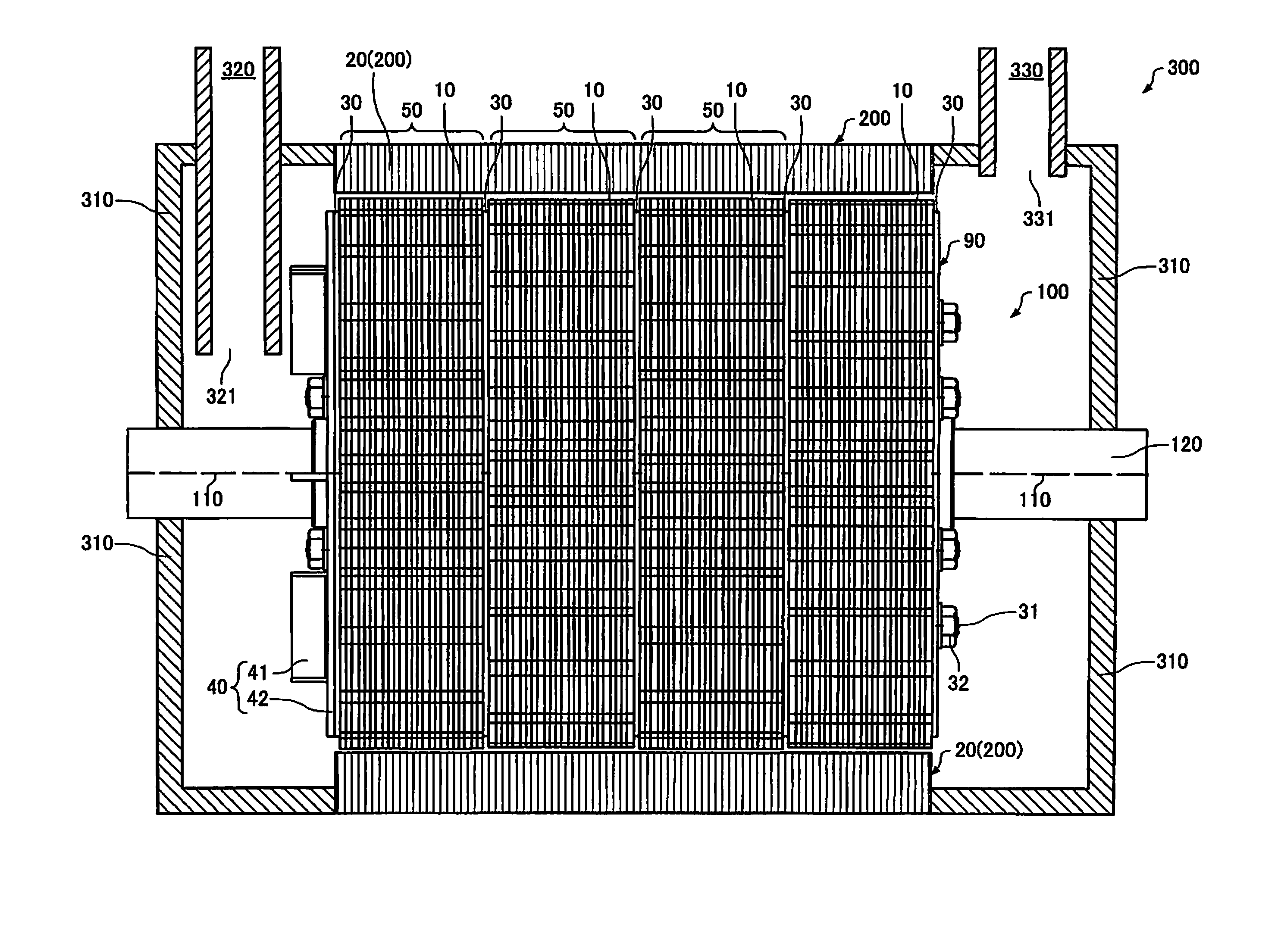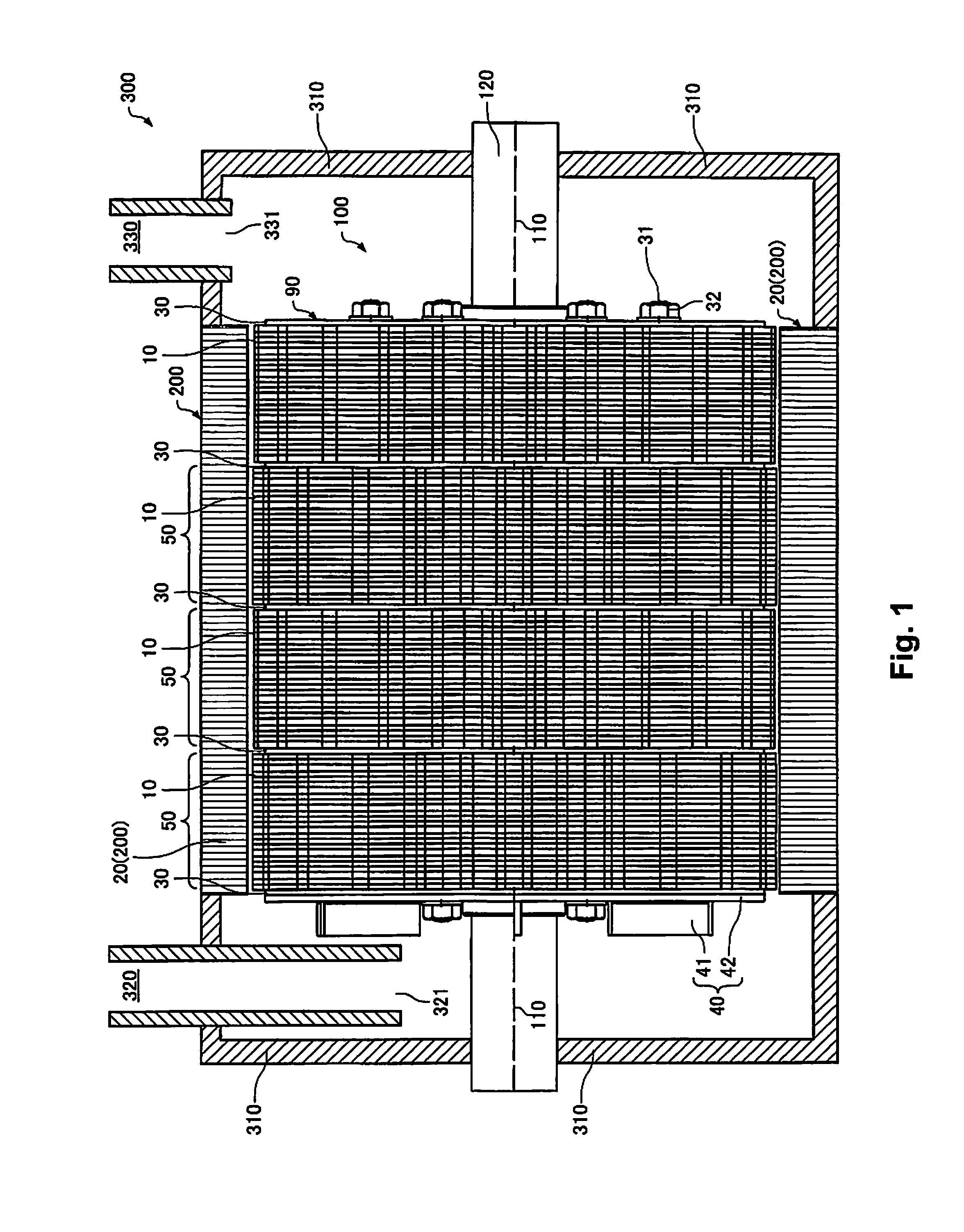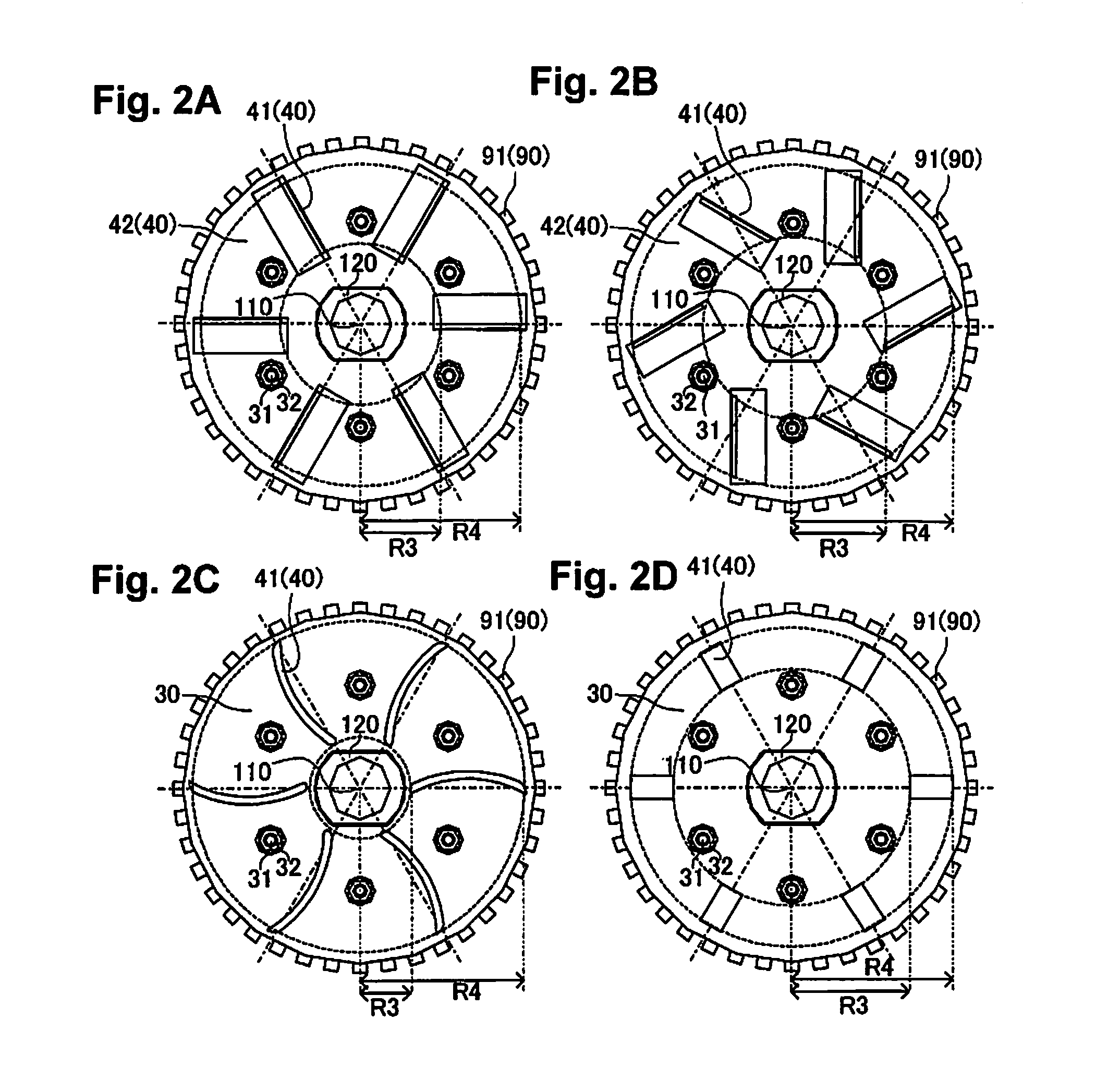Sheet manufacturing apparatus and defibrating unit
a technology of defibrillator and manufacturing apparatus, which is applied in the field of sheet manufacturing apparatus and defibrillator, can solve the problems of difficult to reduce the size of the sheet manufacturing apparatus, difficult to meet current energy saving demands, and manufacturing completely with dry type technology, so as to effectively feed the defibrillator and suppress the generation of transfer problems
- Summary
- Abstract
- Description
- Claims
- Application Information
AI Technical Summary
Benefits of technology
Problems solved by technology
Method used
Image
Examples
Embodiment Construction
[0044]Several embodiments of the present invention will be described below. The embodiments described below will be described as examples of the invention. The invention is not limited to the following embodiments and various modifications, which are carried out within a scope which does not depart from the gist of the invention, are included. Here, none of the configurations described below limit the configuration which is essential for the invention.
1. Sheet Manufacturing Apparatus
[0045]A sheet manufacturing apparatus 1000 according to the present embodiment will be described below by appropriately referencing FIGS. 1-10.
[0046]FIG. 1 is a schematic diagram illustrating a partial cross section of a defibrating unit 300. FIGS. 2A to 2D are schematic diagrams illustrating a rotating unit 100 viewed from the extending direction of a central rotation axis 110. FIG. 3 and FIG. 4 are schematic diagrams illustrating a main portion of the defibrating unit 300 viewed from a direction which ...
PUM
| Property | Measurement | Unit |
|---|---|---|
| circumference | aaaaa | aaaaa |
| size | aaaaa | aaaaa |
| outer circumference | aaaaa | aaaaa |
Abstract
Description
Claims
Application Information
 Login to View More
Login to View More - R&D
- Intellectual Property
- Life Sciences
- Materials
- Tech Scout
- Unparalleled Data Quality
- Higher Quality Content
- 60% Fewer Hallucinations
Browse by: Latest US Patents, China's latest patents, Technical Efficacy Thesaurus, Application Domain, Technology Topic, Popular Technical Reports.
© 2025 PatSnap. All rights reserved.Legal|Privacy policy|Modern Slavery Act Transparency Statement|Sitemap|About US| Contact US: help@patsnap.com



